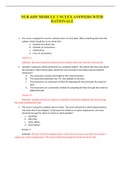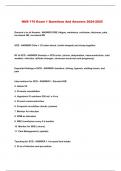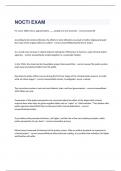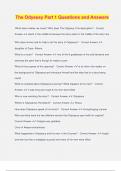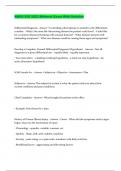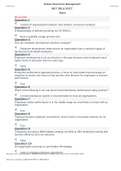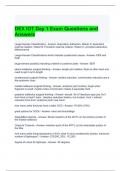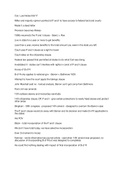Exam (elaborations)
NUR 4455 MODULE 3 NCLEX ANSWERS WITH RATIONALE
- Course
- Institution
NUR 4455 MODULE 3 NCLEX ANSWERS WITH RATIONALE1. The nurse is assigned to care for a patient who is in early labor. When collecting data from the patient, which should the nurse check first? a. Baseline fetal heart rate b. Intensity of contractions c. Maternal bp d. Freq. of contractions 2. Leopold...
[Show more]
